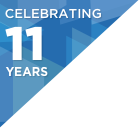Conference: Nov 5-7, 2018
Workshops: Nov 8–9, 2018
Presentation: CI/CD: Lessons from LinkedIn and Mockito
Share this on:
What You’ll Learn
- How continuous deployment can improve your organization's productivity.
- Challenges, differences and similarities of CD at LinkedIn (large scale enterprise) and Mockito (OSS software library with huge user base).
Abstract
LinkedIn and Mockito are two different use cases of implementing continuous delivery at scale. Yet the challenges, benefits and impact on the engineering culture are very similar.
In 2015, LinkedIn’s flagship application adopted a continuous delivery model we called 3x3: deploy to production 3 times a day, with a 3 hour maximum time from commit to production. At LinkedIn scale - hundreds of engineers building products for 500M users - implementing 3x3 was really hard. How did 3x3 change LinkedIn engineering culture and what we have learned on the way?
Mockito is a top 3 Java library with ~2M users. Even with that large user base, since 2014, the Mockito project has taken the surprising approach of publishing a new version of the library from every single pull request. This approach is challenging and innovative in the Java community, and Mockito leverages Shipkit to ship every change to production. Why did the Mockito team adopt continuous delivery in 2014 and what we have learned to date?
Join and learn from Szczepan Faber, the maker of Mockito framework since 2007, and the tech lead of LinkedIn Development Tools since 2015.
Interview
Since many years my passion is developer productivity at scale. I started this back in 2007, when I attempted to change how Java engineers write unit tests with mocks (Mockito framework). Today I help with engineering productivity at LinkedIn in two ways.
Firstly, my team provides development tools and workflows to 3000 LinkedIn engineers. We manage code review, continuous integration, commit-to-publish pipeline, IDE integrations, dependency management and many more. We maintain cohesive engineering culture because every team is using standard development workflow. I tech lead the efforts of building great tools for developers.
Secondly, I am deeply involved in training and developer education programs. I often design and develop training because it really helps boosting productivity in engineering teams.
In the open source and in the enterprise continuous delivery is not yet adopted as widely as it should given how it helps with productivity. I hope engineering teams will experiment more with continuous delivery and try to push themselves to go into that model.
Developers and architects who want help teams increase their productivity by shipping to production frequently and automatically.
Learn about the challenges and advantages of adopting continuous delivery at scale. Get excited to reduce manual steps from commit-to-production pipeline. Get practical suggestions, too! Continuous delivery is hard but you really want to push great features to your customers faster.
There are challenges at LinkedIn that keep me excited and very busy. Reducing commit-to-publish time for every engineering team is a big one. It’s because shipping code faster is probably the most tangible way of increasing developer productivity.
Another challenge is dependency management at scale. How to manage version upgrades, dependency conflicts, large scale changes that require updates to thousands of codebases? In the Open Source I would love to push the community towards continuous delivery model for software libraries. Mockito framework paved the way for this model. Me and other enthusiasts from Mockito community work on a new release automation framework called “Shipkit” - a toolkit for shipping it.
I still contribute to Mockito regularly, and I focus on strategic API extensions that help other frameworks like Spring Boot or Powermock to cleanly integrate with Mockito. My goal is to ensure thoughtful evolution of Mockito API so that it remains the best mocking framework for Java.
Similar Talks



.
Tracks
-
Architectures You've Always Wondered About
Architectural practices from the world's most well-known properties, featuring startups, massive scale, evolving architectures, and software tools used by nearly all of us.
-
Going Serverless
Learn about the state of Serverless & how to successfully leverage it! Lessons learned in the track hit on security, scalability, IoT, and offer warnings to watch out for.
-
Microservices: Patterns and Practices
Stories of success and failure building modern Microservices, including event sourcing, reactive, decomposition, & more.
-
DevOps: You Build It, You Run It
Pushing DevOps beyond adoption into cultural change. Hear about designing resilience, managing alerting, CI/CD lessons, & security. Features lessons from open source, Linkedin, Netflix, Financial Times, & more.
-
The Art of Chaos Engineering
Failure is going to happen - Are you ready? Chaos engineering is an emerging discipline - What is the state of the art?
-
The Whole Engineer
Success as an engineer is more than writing code. Hear inward looking thoughts on inclusion, attitude, leadership, remote working, and not becoming the brilliant jerk.
-
Evolving Java
Java continues to evolve & change. Track covers Spring 5, async, Kotlin, serverless, the 6-month cadence plans, & AI/ML use cases.
-
Security: Attacking and Defending
Offense and defensive security evolution that application developers should know about including SGX Enclaves, effects of AI, software exploitation techniques, & crowd defense
-
The Practice & Frontiers of AI
Learn about machine learning in practice and on the horizon. Learn about ML at Quora, Uber's Michelangelo, ML workflow with Netflix Meson and topics on Bots, Conversational interfaces, automation, and deployment practices in the space.
-
21st Century Languages
Compile to Native, Microservices, Machine learning... tailor-made languages solving modern challenges, featuring use cases around Go, Rust, C#, and Elm.
-
Modern CS in the Real World
Applied trends in Computer Science that are likely to affect Software Engineers today. Topics include category theory, crypto, CRDT's, logic-based automated reasoning, and more.
-
Stream Processing In The Modern Age
Compelling applications of stream processing using Flink, Beam, Spark, Strymon & recent advances in the field, including Custom Windowing, Stateful Streaming, SQL over Streams.
-
Performance Mythbusting
Real world, applied performance proofs across stacks. Hear performance consideratiosn for .NET, Python, & Java. Learn performance use cases with OpenJ9, Instagram, and Netflix.
-
Tools and Culture: What's Beyond a Stack of Containers?
Containers are not just a techology. It's a platform. Push your knowledge.
-
Web as Platform
All things Browser, from JavaScript Frameworks for animation and AR / VR to Web Assembly and from protocol work to open standards evolution.
-
Beyond Being an Individual Contributor
Beyond being an individual contributor. Building and Evolving managers and tech leadership.
-
Building Great Engineering Cultures
Why engineering culture matters. Track features org scaling, memes as a culture tool, Ally skills, and panels on diversity / inclusion.
-
Hardware Frontiers: Changes Affecting Software Developers Today
Topics around: Quantum computing, NVM, SMR, GPU, custom hardware, self-driving cars, and mobile hardware.










